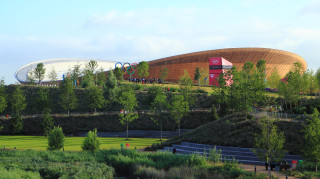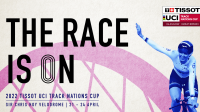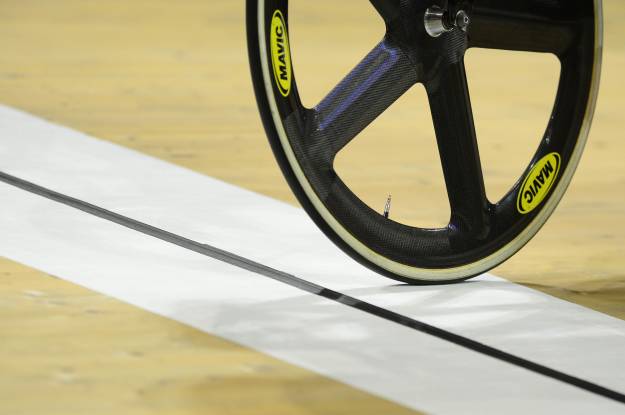If you’re looking to wow your friends between races at the forthcoming UCI Track Cycling World Cup, here are five bite-sized facts about the famous ‘Pringle’ that will mark you out as a bona-fide track cycling guru. Or something like that.
1. Why ‘The Pringle’?

No it’s nothing to do with gentleman’s golfing attire. Lee Valley VeloPark velodrome, to give the structure its proper title, has a roof shaped startlingly like the well-known potato-based snack item.
Actually it’s a lot smarter than that. The swooping design apes the shape of the track that it protects from the whims of East London’s weather and its lightweight design is also intended to evoke the spare, minimalist form of the bicycle itself.
2. Nails – lots of nails

The high-tech velodrome’s track is held together by the most primitive of attachment technologies – the humble nail. And here’s a stat – more than 350,000 of them were used to secure Lee Valley's Siberian pine track surface to its robust wooden sub-frame. If they were laid end to end they would lap the track 140 times!
3. Siberia’s loss is London’s gain

Siberia is a vast, sparsely populated land of ice, snow, and huge forests, the latter being the prime source of the world’s best track building material, the imaginatively-named Siberian pine.
Latin name pinus sibirica, the wood’s strength and malleable nature makes it ideal for track building. When properly constructed, a Siberian pine track is reputed to produce a faster surface than other materials. Around 56 kilometres of the stuff was used to create the 250-metre banked oval upon which London 2012’s unforgettable track cycling dramas were played out.
4. World wide Webb

The Lee Valley track was designed and constructed by track building guru Ron Webb. The Australian track designer has laid the surfaces of some of the world’s most renowned tracks, including Manchester, Sydney, Athens and, erm, Calshot, whose dizzying banking has been terrifying Southampton-based trackies for a generation.
5. An icon of design

The stunning building that encases the track was the first structure to be completed in the London 2012 Olympic Park and is one of a number of legacy structures that remains post-Games.
Designed by the award-winning Hopkins Architects, the building uses state of the art sustainable design.
Its revolutionary ventilation systems does away with the need for air conditioning, while its aforementioned snack-shaped roof collects water used for the building’s many public conveniences.









